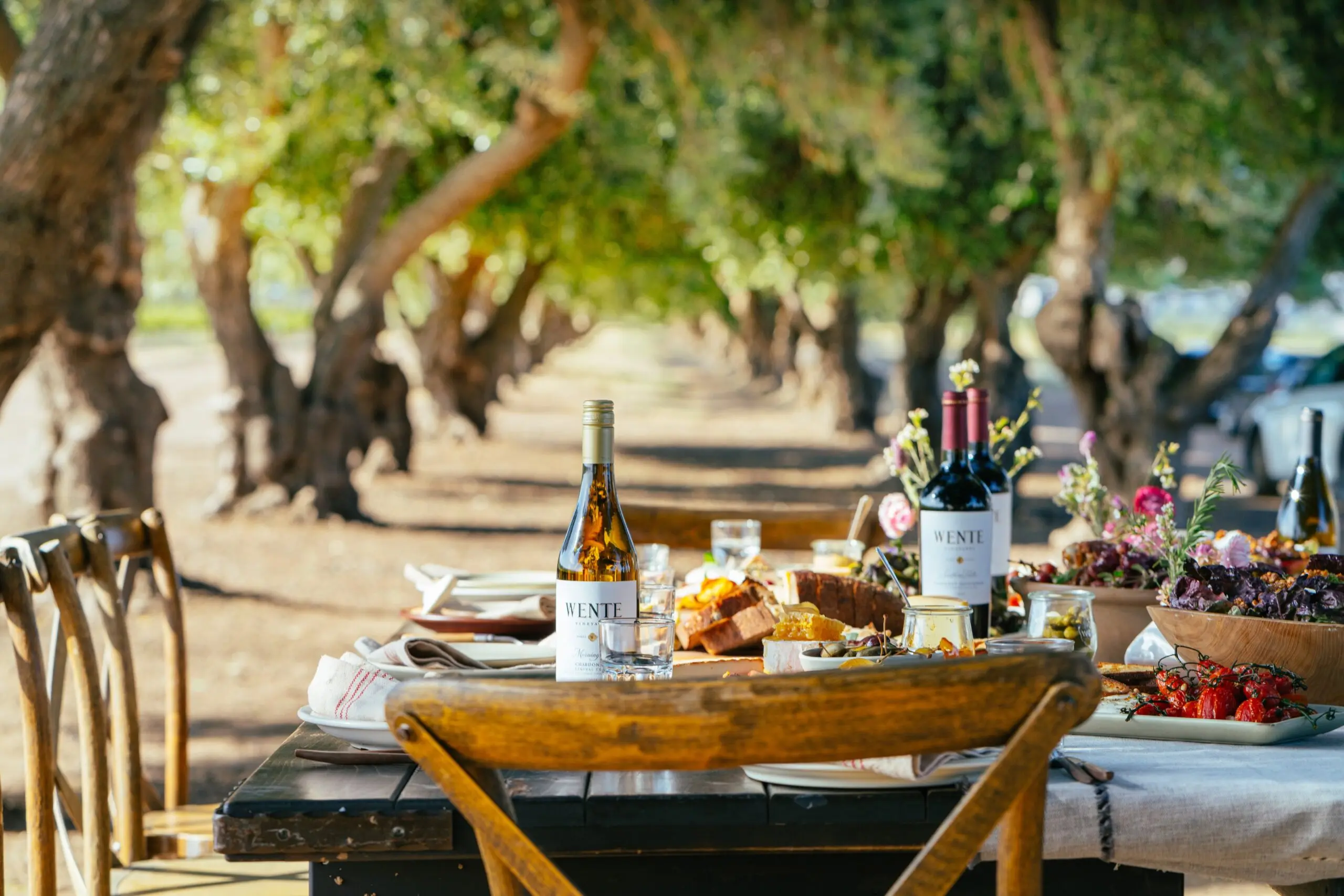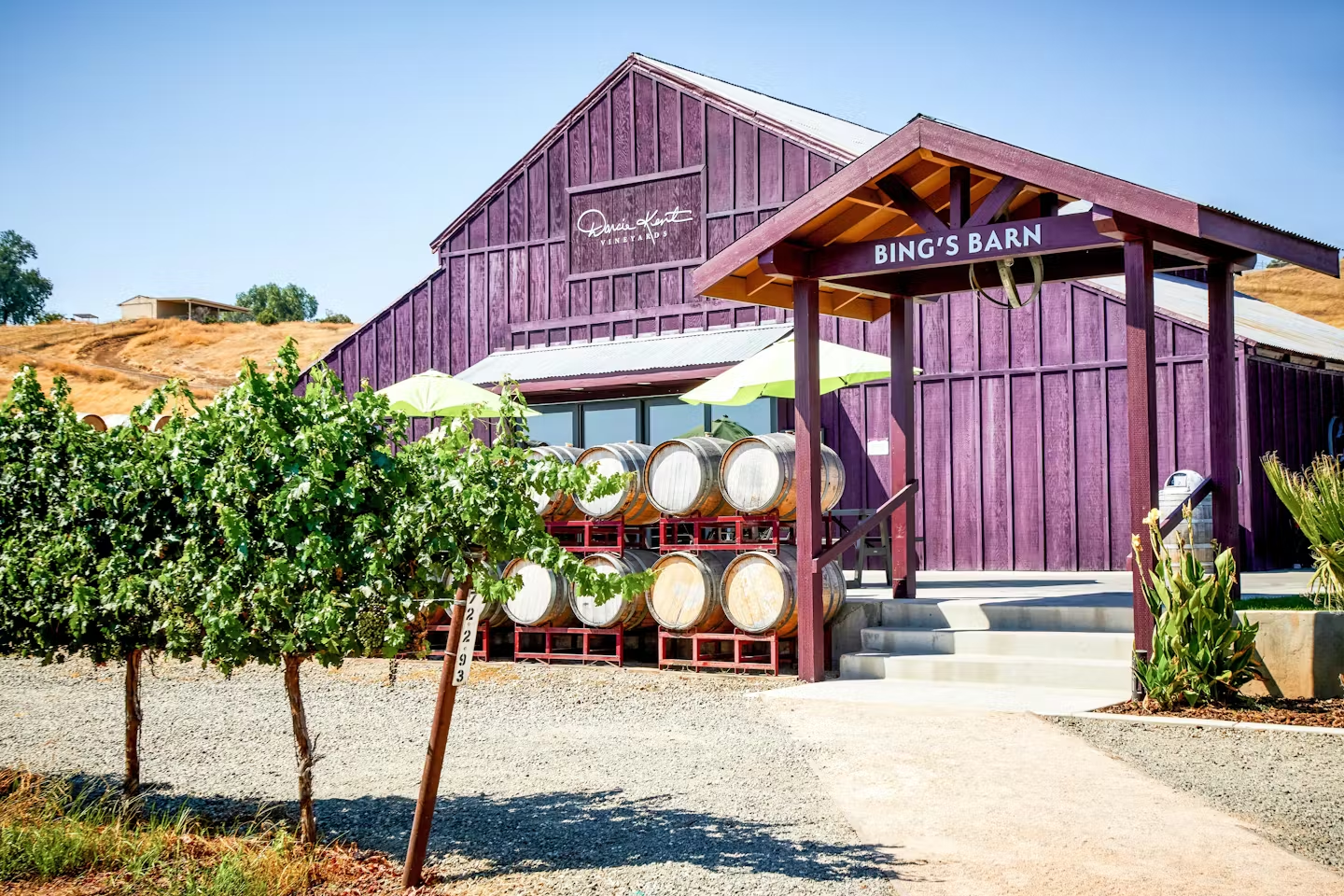Livermore Valley's Re-Emergence as a Wine Powerhouse
- William Smith

- Jun 20
- 8 min read
For most visitors seeking a wine adventure and coming into the San Francisco Bay Area, their journey is often north – into the famed Sonoma and Napa Valleys. It’s understandable.
Some of the world’s best wines can be accessed there and with wine tourism taking a hit since the pandemic and many tasting rooms shuttering their operations entirely or curtailing hours, every visitor is needed. Go!
But visitors to Northern California wine country are missing out if they don’t journey further abroad, adding on a day or two to explore the regions other incredible and diverse wine regions – including the still-bucolic and ever-pioneering Livermore Valley.
The Livermore Valley
Under an hour’s drive west from San Francisco lies one of the oldest wine regions in the state – and maybe even the oldest – where Spanish missionaries first planted wine grapes in the mid-1700s. In the 1840s, Robert Livermore, the valley’s namesake, planted the first commercial vineyard and was creating table wine for the bustling transit of settlers and gold seekers who stopped over in what would become known as Livermore. By the 1880s, other entrepreneurs saw opportunity in viniculture.
One such pioneer in the area’s wine making was Charles Wetmore, who founded Cresta Blanca Winery in 1882 with, among other sources, Sauvignon Blanc cuttings from France’s Château d’Yquem – that makes for not too shabby a start-up. His success was almost immediate. Nearly a century before the Judgment of Paris, which is largely credited in the contemporary narrative for putting Napa Valley wines at the pinnacle of a wine lover’s pursuit, Wetmore’s 1884 vintage of Cresta Blanca Sauvignon Blanc won the Grand Prix at the 1889 Paris International Exposition.
Along with Wetmore, two wine legends in the Valley also started around this same time – Carl H. Wente and James Concannon. Both the Wente and Concannon wine making enterprises exist to this day, with each, respectively, being the largest and second largest present-day producers of wine from the Livermore Valley. Even more interesting, is that wine as we know it in California would not exist without the efforts of these two winemakers.
First, there is Chardonnay which, as the reigning king of white wines in northern California, might not be the case were it not for the Wente family’s propagation of a clone developed on their property in Livermore, including through Prohibition when Wente was one of only a few winemakers authorized to continue operations for the purpose of sacramental wine production. That clone, which produces small-yields of high-quality, bold and fruit-forward grapes, came to dominate and today accounts for 75 percent of all Chardonnay grown in California. That California chardonnay style – that’s Wente.
And second, there is Cabernet Sauvignon. In 1965, third generation vintner Jim Concannon worked with UC-Davis and undertook the development of clones of the varietal that would be more resistant to attacks of phylloxera. From that effort emerged Clones 7, 8, and 11 which now account for an estimated 80 percent of all Cabernet Sauvignon grown in California.
The legacy and history of wine in California is one profoundly influenced by the Livermore Valley and its producers. And from a recent trip to the area, it feels evident that the future of California wine is also front and center in the Valley’s contemporary wine scene. From glorious, historical estates to plucky and talented vintners creating craft bottlings, there is a vibrancy and optimism in Livermore that is infectious in the best of ways.
The Livermore Valley was designated an American Viticultural Area (AVA) only in 1982 and largely to elevate and differentiate itself from other areas within California’s Central Coast appellation. Additionally, sprawl and gentrification into the valley was threatening the existence of the area’s viticulture. With a designated importance as a viticultural area, a plan was subsequently adopted for the region that protects and stewards the Valley’s rich past as a wine making region into the present. Today, more than 50 wineries call the Livermore Valley home. It’s a place with a unique climate, where summer days can be blistering, but where much of the planted vineyards are situated in such a way as to benefit from coastal breezes and morning fog that control temperature and ripening.
In advance of a recent outing to Livermore Valley, I did something unusual – I crowdsourced recommendations from a wine aficionado group on Facebook. That yielded a dozen or so recommendations that, with additional research, I whittled down to four – Wente Family Vineyards, Omega Road Winery, Steven Kent Winery, and Darcie Kent Estate Winery (the latter two having no familial relationship to one another).
Wente Family Vineyards
Wente Family Vineyards’ main tasting room is a stunning property – purchased in 1981, it was the historic Cresta Blanca Winery estate and Niki Wente, who played an excellent host, showed me one of the large historic, artfully carved barrels used at Cresta Blanca nearly a century earlier. The contemporary elegance of the estate and its tasting room meld effortlessly with Spanish Colonial-inspired architectural elements. There is also an adjacent golf course where at several times throughout the summer, guests can participate in “Swing Sip Barbecue” and play seven holes of golf while enjoying wine and a barbecue buffet dinner at the property’s restaurant, The Grill.
As enthralling as the property and its history can be, of course the real reason to visit Wente is the wine. What was once a fully operational and posh restaurant on property now serves as the “Tasting Lounge” that offers seated tastings throughout the day both inside and on the patio. Reservations are recommended (and can be made on the website) but they also welcome walk-ins. Many of Wente’s wines can be found everywhere and are in wide distribution. But several can only be found at the Tasting Room or by ordering directly from Wente and in last month’s Vine Finds in Polo Lifestyles, I reviewed one such wine, the 2024 Niki’s Rosé. It’s the perfect summer wine. Other standouts included the 2023 Sauvignon Blanc, which I will be reviewing later this summer, and the 2020 Limited Release Cabernet Franc.
Omega Road Winery
Omega Road is a favorite of Livermore Valley wine lovers and for good reason. The place and its wines ooze a welcoming and informal playfulness coupled with an artisan’s approach to small production bottlings. In total, Omega Road produces around 800 cases a year. The tasting room and production facility sit inside a modest storefront in Livermore’s Vasco Row, where craft breweries, distillers, and winemakers have gathered together to create a burgeoning entertainment venue.
Omega Road is a family venture, founded by father-daughter team Ken and Alexandra Henkelman. If you’re lucky, as I was, Alexandra will be your host in the tasting room and Ken may pop in as well. Ken learned wine making from Michael Grgich of Chateau Montelena and the eponymous Grgich Hills Estate. His love of the craft has rubbed off on Alexandra, who shares a wealth of knowledge about what she does in the most unpretentious style.
Settling into a couch in the tasting room felt like the warmth of a living room – and good thing since I stayed way past closing and had to taste every unique and delicious bottling possible. The 2023 Sparkling Alvarinho, with fruit sourced from the Silvaspoons Vineyard in nearby Lodi, was crisp and citrusy and a total surprise from a varietal finding its expression in California’s warmer climates. The 2020 Tempranillo, with fruit sourced from a Wente property in Livermore, was exquisite, with a nose of leather and moss, and lush on the palette with lots of dark fruits and well-balanced tannins.
Darcie Kent Estate Winery
Established in 1996, the family owned and operated winery is helmed by winemaker Darcie Kent, a fifth-generation vintner whose Swiss great, great grandfather journeyed to America in the late 19th century to pursue a career in wine. Darcie is also an artist, so there are visual cues to her dual identities everywhere, including a brightly painted shipping container and holding tank. It’s a bit of whimsy that also makes its way to the colorful artistry of each and every label on the estate’s wines.
Reservations can be made online through the winery’s website with both indoor and outdoor options available. On the day of my visit, several walk ins were also welcomed and easily accommodated. Indoor tastings occur in Bing’s Barn, which was part of Cedar Mountain Winery that Darcie acquired in 2013. It’s a homey space with a glass door front that creates opportune gazing at the vines stretching to the horizon.
Various tasting flights are offered. I loved the 2024 Victories Rosé of Malbec. Darcie Kent uses Malbec in blending various reds, but here it stands on its own, with tart strawberry, ripe melon, and bone dry minerality. Delicious. As a bonus, $2 from the sale of every bottle goes to support breast cancer care for lower income neighbors in the community. Locals love the Darcie Kent Firepit Red. The 2020 vintage is a blend of 80 percent Cabernet Sauvignon and 20 percent Petite Sirah and as the name indicates, is the perfect red to open with friends around a firepit or over an evening of camaraderie with friends and grilled anything.
Steven Kent Winery
Of all the recommendations received from my crowdsourcing, the Steven Kent Winery rose to the top. I undertook some additional research, and it was clear there was something to pursue here. Accolades were aplenty for Steven Kent and his heightened level of craftsmanship toward his Cabernet Sauvignon and even more so, toward his Cabernet Franc bottlings. When Steven himself greeted me at the door of his tasting room – also on Vasco Row – he was all smiles and immediately led us to an impeccably arranged tasting set up. What became immediately clear was that I wasn’t just here for a tasting, I was here to leave convinced that the Livermore Valley’s future lies in creating world class Cabernet Franc. This is a man on a mission. I met no one in the Valley more tenacious than he in the pursuit of elevating the Livermore Valley to the upper echelons of the world’s top wine regions.
Kent, a sixth-generation winemaker, hails from the Mirassou family, which has been making wine in California for more than 160 years and were pioneers of Pinot Noir cultivation in the state. In 1996, and with his father, they started the Steven Kent Winery. “Our first wines were very well-received and were proof of our feeling that the Livermore Valley was as ideally suited as any growing area in the world to produce world-class Bordeaux varietals,” he wrote. In 2007, he launched the Lineage line of wine under the Steven Kent umbrella, a singular bottling each year of a Cabernet Sauvignon dominant blend. The 2018 vintage received a stellar 97 score from Wine Enthusiast. In 2017, he launched L’Autre Côte, a Cabernet Franc dominant blend – the yin to the Lineage yang in Kent’s world of viticulture – a delicious and dark fruit-forward wine with herbaceous and spice notes and fine-grained tannins.
Kent believes that to increase the visibility of the Livermore Valley, producers need to focus in on doing one or two things exceptionally well. With his Cabernet Franc wines, he’s going all in. Several favorites of his wines – the 2023 Elements and the 2023 Rock Cabernet Francs – are from select blocks in the prized Ghielmetti Vineyard in the Livermore Valley where Kent has homed in on terroir and clonal selection toward extracting excellence. Both are only available in the tasting room and are small production.
Tasting through a half dozen of Kent’s Cabernet Franc bottlings had the feel of both a master class in the varietal and the most compelling sales pitch for the future of the grape in the Livermore Valley. Had his wines not been up to the task, I would have walked away amused. As it is, count me in Steve, as both a convert and a member of the cheering squad.
As always, Salud!













monero miners monero miners
monero miners monero miners
monero miners monero miners
monero miners monero miners
monero miners monero miners
monero miners monero miners
etc mining etc mining
monero miners monero miners
monero miners monero miners
monero miners monero miners
monero miners monero miners
monero miners monero miners
monero miners monero miners
etc mining etc mining
monero miners monero miners
monero miners monero miners
monero miners monero miners
monero miners monero miners
monero miners monero miners
monero miners monero miners
etc mining etc mining
monero miners monero miners
monero miners monero miners
monero miners monero miners
monero miners monero miners
monero miners monero miners
monero miners monero miners
etc mining etc mining
monero miners monero miners
monero miners monero miners
monero miners monero miners
monero miners monero miners
monero miners monero miners
monero miners monero miners
etc mining etc mining